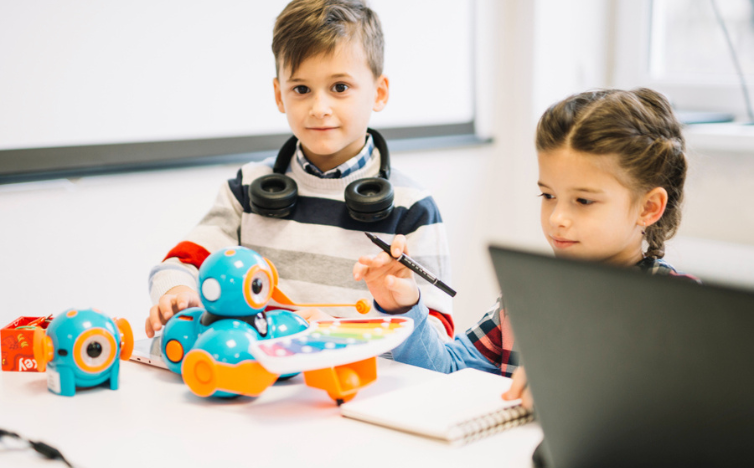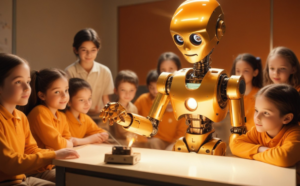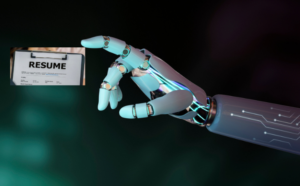Over the past ten years, artificial intelligence (AI) has moved beyond the field of science fiction and become a regular part of our daily lives. From voice assistants to personalized recommendations, AI has not only made life easier for adults but has also started to influence children’s experiences. The introduction of AI into children’s educational tools is more than simply a novel idea; it suggests a shift in the way youngsters understand, learn about, and interact with the world. Today, we’ll delve into these innovative tools, discussing their implications and the possibilities they offer for education, as well as talking to common questions about AI for children.
Table of Contents
The Educational Horizon Altered by AI
The use of AI in educational tools has created personalized learning paths, individualized tutoring systems, and adaptive feedback mechanisms. These tools aren’t meant to replace teachers or traditional classrooms, but to enhance and personalize the learning experience.

Personalized Learning Journeys
AI tools can understand how fast a child learns and the way they learn best. They then offer content that fits each child’s needs. These tools can see how a child is doing and change what they offer next. This level of personalization goes beyond what a teacher can do in a big class. It makes sure each child gets the right balance of challenge and help.
Interactive and Immersive Experiences
AI helps educational tools offer fun and hands-on learning experiences. Games, virtual activities, and augmented reality make it easier to understand tricky ideas by connecting them to real-life examples. For instance, language apps with AI can listen to you talk and help you practice having conversations. This makes learning feel more like a real experience.
Early Detection of Learning Challenges
One of AI’s most significant contributions to education is its ability to detect learning challenges early. By analyzing a child’s learning patterns, AI can identify struggles in real time and provide additional support or notify teachers and parents about the need for involvement. Finding issues early and helping right away is really important for a child’s success in school and how they feel.
The Critics and the Cautious
Some people have doubts about using AI in kids’ education, despite its potential benefits. They worry that relying too much on technology might affect children’s ability to socialize and understand their feelings. However, supporters say that good AI tools for kids still need human help and should be used alongside regular classrooms, not instead of them.
Addressing Ethical and Privacy Concerns
There are also ethical considerations, particularly regarding the use of children’s data by AI systems. Educational platforms need to follow data protection laws and make sure kids’ security and privacy are top priorities. They should have clear rules about data and let parents control it. Kids should also get explanations about how their data is used that are easy for them to understand.
Balancing Screen Time and Real-World Experiences
Another concern is the increase in screen time and potential isolation from the physical world. It’s essential that AI tools are used in moderation and that children still have access to other forms of learning and play. Encouraging a balance between digital and physical experiences is crucial to supporting a child’s overall development.
Looking Ahead: Preparing the Next Generation
The role of AI in children’s education is still in its early stages, but it’s clear that it could completely change how learning happens. Educators, parents, and tech developers must work together to ensure that AI tools are not only effective but beneficial for children’s growth and development.

Educator Involvement and Professional Development
To make the most of AI tools, it’s important to include teachers in creating them. Giving teachers training and chances to learn more can help them use AI well in class. They can also share what they know with the people making the tools, so they match what teachers need and what’s best for education.
Continuous Innovation and Adaptation
The landscape of AI is constantly evolving, and so must the tools used in education.It’s important to keep improving AI tools by staying updated on new research about how kids learn and grow, as well as new AI technology. Developers and teachers should talk regularly to make AI tools better and make sure they keep helping kids and schools.
Digital Literacy and Critical Thinking
As AI becomes more common, the need for digital literacy and critical thinking skills has never been more critical. Educators and parents need to foster an environment where children can engage with AI tools in a critical and informed manner, understanding the technology behind them and the reasons for their use.
Fostering Curiosity and Creativity
AI tools can provide children with instant access to vast amounts of information, but it’s essential to foster their curiosity and creativity. Encouraging children to ask questions, think critically, and create their own content will be as important as consuming the content provided by AI tools.
Conclusion
In conclusion, the integration of AI into children’s education is more than just a passing trend. It is a wave of innovation that has the potential to significantly improve how children learn and grow. By understanding the benefits, addressing concerns, and fostering a balanced approach, we can prepare the next generation for a future where AI is not just a convenience, but an integral part of their educational journey.
FAQs
What are some popular AI educational tools for kids?
There is a growing market of AI educational tools catered to various age groups and subjects. For young children, apps like Meebie help develop emotional recognition and social skills, while Osmo combines physical play with digital learning. On the other hand, older students can benefit from adaptive learning platforms like DreamBox for math and Duolingo for language acquisition.
How can I ensure that an AI tool is appropriate for my child’s age and development stage?
Before introducing an AI tool to your child, it’s crucial to research and consider the age-appropriateness of the content and interface. Look for tools that offer different levels or adaptive programming that can cater to your child’s developmental stage, ensuring that the content and challenges are neither too easy nor too overwhelming.
What role should I play as a parent in my child’s AI-assisted learning?
Parents play a vital role as mediators between children and AI technology. It’s important to be involved, aware of what your child is learning, and also provide analog, real-world educational experiences to complement AI tools. Engage with the content together, ask questions, and support your child’s curiosity and critical thinking about technology.
How can I discuss the use of AI tools with my child in a way that’s informative and not scary?
Start with simple explanations about how the AI tool works and, later on, you can discuss the broader implications of AI in society. Encourage open dialog about technology and its role, emphasizing that AI is a tool that can be used for various beneficial purposes, including learning and creativity.




